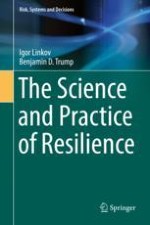2019 | OriginalPaper | Buchkapitel
8. Metrics-Based Approaches
verfasst von : Igor Linkov, Benjamin D. Trump
Erschienen in: The Science and Practice of Resilience
Aktivieren Sie unsere intelligente Suche, um passende Fachinhalte oder Patente zu finden.
Wählen Sie Textabschnitte aus um mit Künstlicher Intelligenz passenden Patente zu finden. powered by
Markieren Sie Textabschnitte, um KI-gestützt weitere passende Inhalte zu finden. powered by
